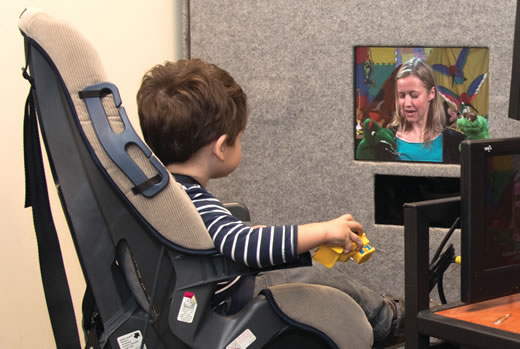diagnosis
Autism Spectrum Disorder: Progress Toward Earlier Diagnosis
Posted on by Dr. Francis Collins

Stockbyte
Research shows that the roots of autism spectrum disorder (ASD) generally start early—most likely in the womb. That’s one more reason, on top of a large number of epidemiological studies, why current claims about the role of vaccines in causing autism can’t be right. But how early is ASD detectable? It’s a critical question, since early intervention has been shown to help limit the effects of autism. The problem is there’s currently no reliable way to detect ASD until around 18–24 months, when the social deficits and repetitive behaviors associated with the condition begin to appear.
Several months ago, an NIH-funded team offered promising evidence that it may be possible to detect ASD in high-risk 1-year-olds by shifting attention from how kids act to how their brains have grown [1]. Now, new evidence from that same team suggests that neurological signs of ASD might be detectable even earlier.
Genome Sequencing: Exploring the Diagnostic Promise
Posted on by Dr. Francis Collins

Caption: Whole genome sequencing revealed that sisters Addison and Trinity Hanners, ages 7 and 10, shown here with their mother Hanna, have a rare syndrome caused by a mutation in the MAGEL2 gene.
Credit: Courtesy of the Hanners family
At the time that we completed a draft of the 3 billion letters of the human genome about a decade ago, it would have cost about $100 million to sequence a second human genome. Today, thanks to advances in DNA sequencing technology, it will soon be possible to sequence your genome or mine for $1,000 or less. All of this progress has made genome sequencing a far more realistic clinical option to consider for people, especially children, who suffer from baffling disorders that can’t be precisely diagnosed by other medical tests.
While researchers are still in the process of evaluating genome sequencing for routine clinical use, and data analysis continues to be a major challenge, one area of considerable promise centers on neurodevelopmental disorders. Such disorders—which affect about 3 percent of children—range from relatively common conditions like autism spectrum disorder to very rare conditions that impair the development of the brain or central nervous system. In the latest study, an NIH-funded research team reports that sequencing either a patient’s whole genome or whole exome (the 1.5 percent of the genome that encodes proteins) appears to be an effective—as well as a cost-effective—strategy for diagnosing neurodevelopmental disorders that have eluded diagnosis through standard means.

